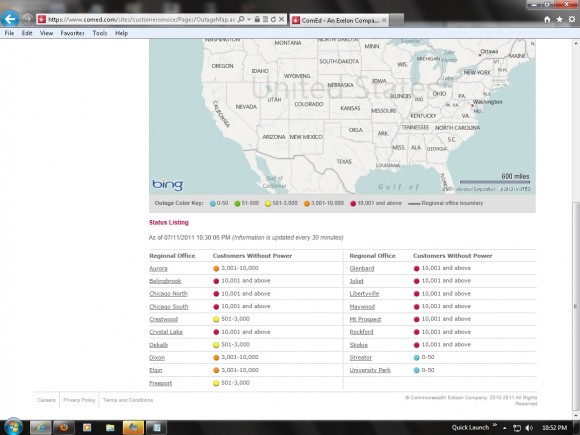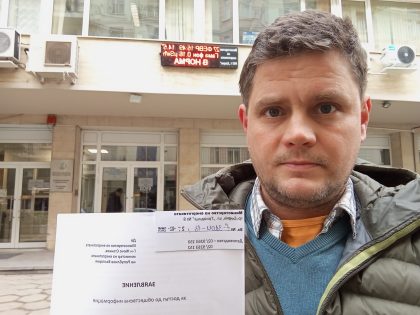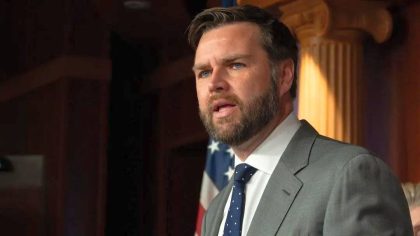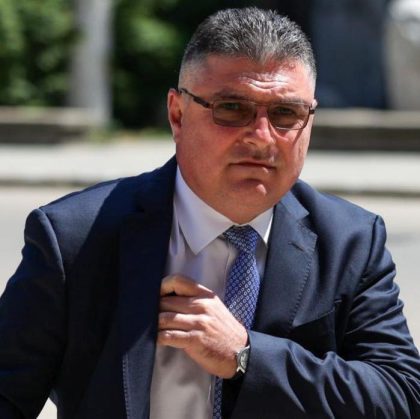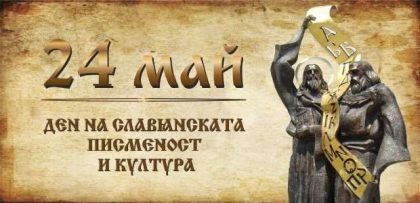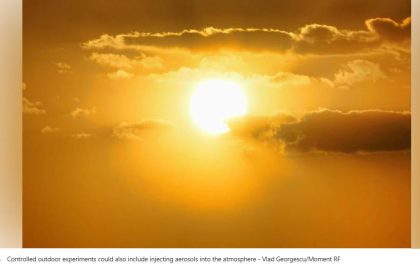They call it a ‘derecho’ — a short, violent windstorm with sustained straight line winds that can exceed 100 mph.
Like a slap in the face, the derecho that hit the Chicago area Monday morning was over almost before it began. But it could be days before all of the more than 860,000 homes and businesses that lost power in the storm see their electricity restored, ComEd says.
With more than half a million customers still without power in the humid 86-degree heat as of 7 p.m. Monday, ComEd officials compared the freak weather to a World War II bombing campaign and said their growing count of customers who lost power at the storm’s peak would likely exceed the 861,000 recorded during an ice storm on March 8, 1998.
“It was like a blitzkrieg type storm,” ComEd’s senior vice president of customer operations Fidel Marquez said.
The hurricane-force winds — reaching a sustained 75 mph at Midway Airport and in Crystal Lake a few minutes either side of 8 a.m. — pounded the city and suburbs during the morning rush hour, halted service on the CTA’s Yellow, Red and Purple Line L trains and on Metra’s Union Pacific trains and caused delays and cancellations at both major airports.
They prompted flood warnings along the lakeshore and forced the closure of Six Flags Great America in Gurnee, while downed trees crushed mobile homes in north suburban Beach Park “like a toy” according to Beach Park Fire Chief Paul Tierney.
Caused by an advancing hail-laden thunderstorm that pushed it in line across the entire metro area, the derecho came within spitting distance of the record 87-mph winds recorded in Chicago on February 12, 1894, according to National Weather Service meteorologist Bill Nelson. It was an unusually severe example of a phenomenon that hits the city about once a year, he said, adding that the name, which derives from the Spanish word for ‘straight,’ is pronounced ‘deh-ray-cho.’
Though there were no reports of anyone being killed by Monday’s storm, a city Streets and Sanitation Department employee was seriously hurt after she made contact with a downed power line in Pilsen.
In Palos Hills, seven people were hurt when the wind blew down a festival tent they were dismantling. Among the injured were a Cook County sheriff’s deputy who was hit in the head with a tent pole and two convicts the deputy was supervising.
And in Joliet, courtrooms full of attorneys and defendants were plunged into darkness when the Will County courthouse lost power.
By Monday afternoon 480 crews of ComEd workmen — augmented by teams drafted from Iowa, Missouri, Wisconsin and Pennsylvania — were working to clear downed trees and power lines and restore electricity across the region.
With frustrated customers — many of whom were among the 400,000 who lost power in a storm just three weeks ago on June 21 — struggling to get answers from the power utility’s overworked helpline, Marquez urged patience, saying it may take “several days” to fix all the damage.
Hinsdale village manager Dave Cook said his staff had been forced to be “ComEd’s Customer service,” adding, “This is happening way too, too often, and the communication with ComEd is what has really been a problem.”
The hardest hit region was in the northern suburbs, where 256,000 were without power at 7 p.m. Monday evening, according to ComEd. In the west suburbs, 122,000 were without power and in Chicago and Maywood, 80,000 customers were still affected. In the south suburbs, 47,000 customers were still in the dark.
Some Chicago residents in senior citizen buildings were without power, Chicago Fire Department officials said.
Contributing: Jon Seidel, Chuck Fieldman, Frank Abderholden, Sun-Times Media
